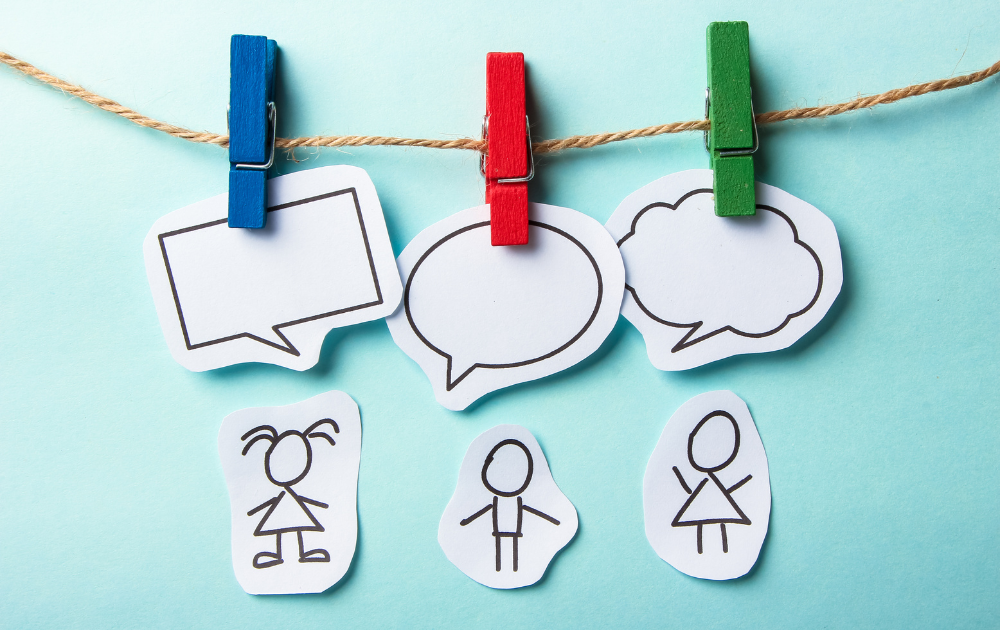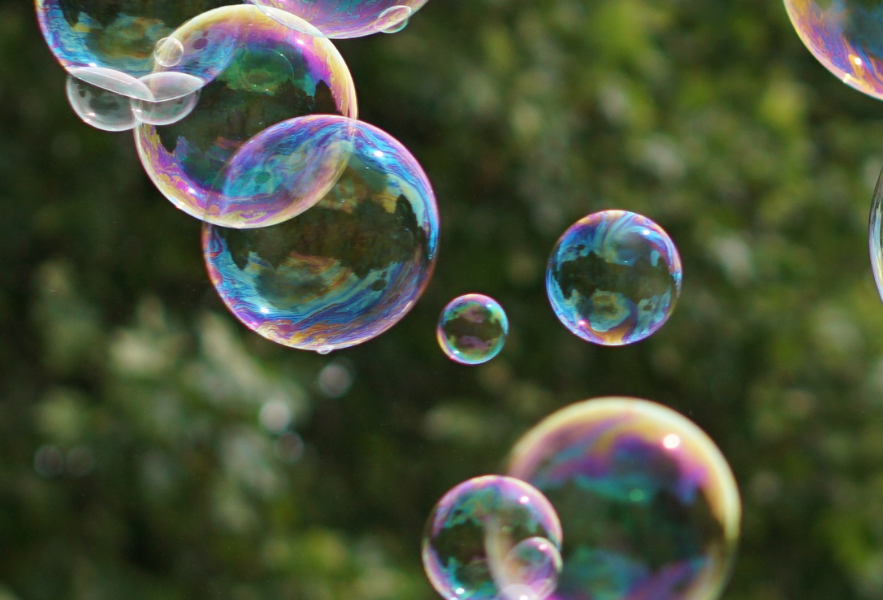If there is only one thing that every person in this world strives for, it is our deep desire to be seen. If there is only one skill that would, without question, benefit all humanity, it is our capability to see others.
In my experience working as a consultant, as soon as I slip into a light explanation of the importance of emotional and cultural intelligence development, I see how people sink in disappointment.
Speaking about open-mindedness, kindness, empathy, and curiosity does not seem so tangible, as speaking about “how to connect with the sponsors,” or “get hired with that organization,” or “negotiate a higher salary,” or “resolve this exhausting conflict.”
You can literally feel how the interest in the conversation becomes lower, how eyes rest on you without engaging, and how that next question focused on more “valuable” information has been forming in their minds.
So, I have nothing else left but to hit the pain button that always works: “How often do you feel lonely here, in Canada?”
The question drops like a bucket of ice water and causes the same unengaged eyes to widen and sometimes fill with tears.
Then there is silence.
I do not interrupt it. I hold the space for as long as needed for them to find the right words and courage to speak.
There are different answers – sometimes sarcastic, sometimes heartbreaking, sometimes rejecting. There is never an answer “Never.”
Well, we all feel lonely from time to time, you would say, and I would agree. What is different for people who are trying to relaunch their lives in another country is that many of them describe themselves as “invisible”, paying an unbearable emotional tax for this, in addition to all other challenges that they need to deal with.
The level of loneliness among immigrants is staggering, especially for older immigrant women. The situation is painful and costly in every sense. The problem is complex, and there is no single best answer to combating loneliness in our society—it is a new pandemic. One approach that many seem to agree on is becoming more empathetic.
Let’s dive a bit deeper into understanding how to do this

I want to be more empathetic – How?
David Brooks writes in his new book “How to Know a Person” that empathy consists of at least three related skills:
a) Mirroring – the act of accurately catching the emotion of the person in front of you.
b) Mentalizing – figuring out what and why is happening, reflecting on one’s own experiences and predicting what the other person is going through
c) Caring – involves getting out of your own experiences and understanding that what you need may be very different from what the other person would need in that situation.
In his Zero Degrees of Empathy, Simon Baron-Cohen, a well-known psychologist and leading scholar in the field of empathy research, speaks about the spectrum on which we all operate with regards to empathy and reminds everyone that empathy can fluctuate depending on the situation. The way you lose your empathy, states Simon, might happen through many routes – could be genetic, early experience, and could be also cultural – the way we define ourselves towards other groups.
Daily spending on social media increases worldwide year after year. As people spend more time on social media platforms, they often find themselves in echo chambers or “bubbles” where the information and opinions they encounter primarily reinforce their existing beliefs, known as confirmation bias. Despite being aware that different perspectives exist, many individuals do not actively seek out or engage with these differing viewpoints to gain a deeper understanding. This behavior limits exposure to diverse cultures and ideas, which is crucial for developing empathy.
It becomes clear that there is a correlation between being empathetic and being culturally competent. Would you agree?

Then, how do I become culturally competent?
You won’t – that’s the case, and that’s unfortunately the main reason why so many don’t even try.
The journey to cultural competence is a lifelong process. There is no way that you will grasp all the intricacies of someone’s world – because that world is a wonderful, living and breathing creature that grows, develops, and expands through time. Cultural competence is a “Horizon” – it might seem to you that a couple more steps and you will catch it, but the more you walk, the more you realize that there is no end to this journey. Therefore, many just stop moving forward at all. Their mind is focused on “the Horizon line” so much that when realization hits that it is unattainable, disappointment follows and people stop walking, not realizing what they are losing by making such a decision.
For years, I’ve observed how immigrants pull out their binders handed to them by immigration officers and settlement organizations from their drawers. These binders usually have information on the importance of cultural adaptation and integration, and they have been rarely utilized. Why? Because people are not sold on the vague idea of “cultural competence” and are overwhelmed with the task to “catch the horizon.” People need to understand what is in this all for them: better job; that desired promotion; higher salary; a new best friend; less loneliness.
As soon as you explain this, they become curious – culturally curious.

How do I develop my cultural curiosity?
Let’s define first that in this context Cultural Curiosity is a deep-seated interest and willingness to engage with, learn from, and appreciate the diverse tapestry of human experiences that encompass not only race or nationality but also age, sexual orientation, worldview, religion, political beliefs, socio-economic status, disability, and more. It embodies an open-minded approach to understanding the complex layers of identity and experience that define individuals and communities.
- By Overcoming Fears
The main reason why people shy away from being culturally curious, unsurprisingly, from fear. Venturing into the “Arena,” requires courage, as it exposes our vulnerability of not knowing. This exposure often feels daunting, stirring a deep-seated fear of judgment or misunderstanding. However, it’s in these moments of vulnerability that true learning and connection occur. By confronting our fears, we open ourselves to new perspectives and experiences, enriching our understanding of the world and those within it. Seeing our vulnerability as a strength, not weakness; embracing this discomfort as a necessary part of growth allows us to step beyond our comfort zones, transforming fear into a stepping stone towards better understanding and development of empathy accordingly.
- By Being Humble and Respectful
David Brooks eloquently states, “We show respect with our eyes,” a sentiment that resonates deeply with the essence of our need to rely on non-verbal communication a lot. Cultural curiosity starts with respect and humility in your eyes. These are foundational to successfully navigating the complexities of diverse cultures. This means approaching each interaction with an openness of not knowing, willingness to admit our mistakes, openness to learn, and commit to improvement. Humility isn’t about diminishing oneself but about recognizing and valuing the vastness of human experience that extends beyond our personal perspectives.
- By Taking Risks
Yes, risk, because no one knows where that “psychologically safe workplaces” will be ready for all of us finally. Curiosity killed the cat, but curiosity also led to the best inventions in this world and brought a tremendous amount of value to our lives. Psychologists have compiled a large body of research on the many benefits of curiosity. It enhances intelligence, increases perseverance, or grit, and propels us toward deeper engagement, superior performance, and more-meaningful goals. And Cultural curiosity is our only chance to break “all the bubbles” and learn how to see one another better beyond the borders.
- By Listening
The joke that you can recognize active listening by the feeling of burning calories brings a smile to many faces because it captures the essence of the effort involved. Active listening is more than just hearing words; it’s an intensive process of engaging with and processing someone else’s perspective. It demands concentration, the suppression of immediate reactions, and the commitment to understand before responding. This level of engagement can be taxing, as it challenges us to put aside our preconceptions and biases to truly hear what’s being said. It’s a crucial skill in the development of cultural competence, enabling deeper connections and understanding.
- By Focusing on Growth, Not Failures
Viewing cultural competence as a horizon is a powerful metaphor that I hope resonates with you. In this context, rather than being discouraged by the idea that there’s no finite destination in cultural competence development, it’s crucial to appreciate the journey itself. Each step towards understanding another’s point of view is a step towards personal and collective growth. This perspective shifts the focus from the fear of never “arriving” to the beauty and richness of the learning process. It encourages us to celebrate the landscapes of human diversity we encounter along the way, acknowledging that every interaction and every piece of new knowledge contributes to our development as culturally intelligent individuals.
- By Learning.
One of the books that I would highly recommend reading on curiosity development, is The Curious Advantage by Paul Ashcroft, Simon Brown 🇺🇦, and Garrick Jones. Taking the widest possible exploration of things Curious – historical, contemporary, neuro-scientific, anthropological, behavioural, semantic, and business-focused, this book also provides a great model of ‘Sailing the 7 C’s of Curiosity,’ that gives a practical framework on how to be successfully curious in day-to-day life.
The 7 C’s of Curiosity, according to authors, are:
- CONTEXT – The broader the context you expose yourself to, the more likely you will find new ideas that stimulate you to explore further.
- COMMUNITY – Curiosity is powered by our community. Societies or organizations with Curiosity as a specific part of culture are more productive, and people are more engaged in learning and in their work.
- CURATION – We need to make choices and intentionally curate our Curiosity to synthesize and focus our thinking, our ideas, and the information we are gathering.
- CREATIVITY – Our exploration into new worlds may require us to think differently, connect something in a new way, and make a leap of faith. Sometimes, it’s the spark that starts a new cycle of Curiosity.
- CONSTRUCTION – Curiosity is not just wondering. It is putting your wonder into action. This means making or constructing something to learn about it. Whether it’s making new connections, building something physical, writing a document, a piece of music, building a business, or just figuring out how something works.
- CRITICALITY – Asking questions is deeply connected to being Curious. It is the questions that prompt us to discover and find solutions. The type of questions we apply are important if we want to know if there is a different or better way. We also need to be aware of our own biases.
- CONFIDENCE – Confidence grows with Curiosity. The two grow with each other. If we approach something new with a curious mindset, being open to trying, failing, and improving – we build our confidence.
This is a valuable book for both individuals and team leaders who strive to develop curious teams.

We at Quiet Tenacity offer Cultural Curiosity Training that focuses on helping you or your team to develop cultural curiosity. This program is a very hands-on learning experience that is focused on ways to become more curious, especially in a new environment, as an immigrant, or internationally educated professional. We can also customize this program to your team learning needs. Reach out if you have any related questions to info@quiettenacity.com and make this program part of your DEIB initiatives in 2024. I guarantee that your employees will benefit from the knowledge and skills developed through this training.
Reflecting on current global events and contemplating the future of our societies, workplaces, and families, it becomes increasingly clear that empathy is a highly sought-after skill. In a world marked by polarization, a lack of acceptance, ongoing wars, and conflicts, the need for empathy is more pronounced than ever. Let’s be honest, we could all benefit from developing this skill further.
Cultivating cultural curiosity is the essential first step toward fostering empathy. It’s not a question of whether you are curious, but rather how are you curious and how do you channel that curiosity to understand and appreciate the diverse tapestry of human experiences around you.
There is always room for growth. Never stop learning.
Thank you for reading
Kindly,
Inna
